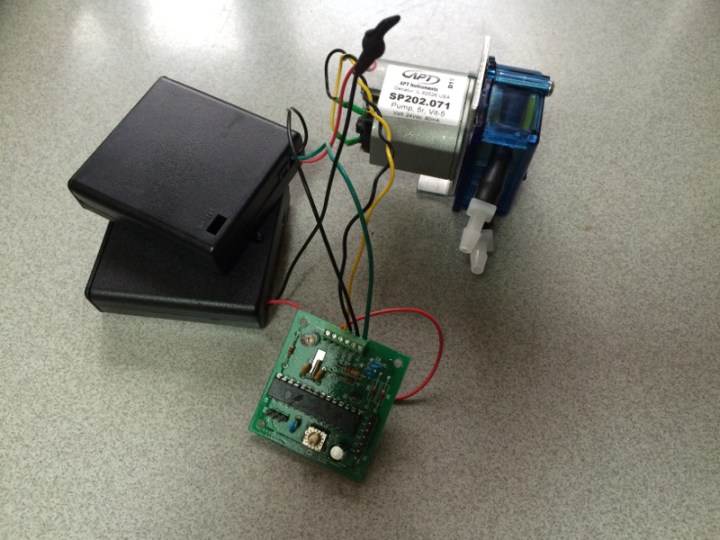
Dr. Robert Long, a senior conservation fellow in the Field Conservation Department at Washington’s Woodland Park Zoo, struggled with how to minimize trips to the survey stations by making the scents last through the winter. He reached out to Joel Sauder, a wildlife biologist for Idaho Fish and Game, and Mike Sinclair from Microsoft Research to work on an electronic device that would allow them to place a large amount of scent in the field and dispense it slowly over a long period of time.
Working with the high school students in his STEM program, Sinclair developed an ultra-low power processor powered by lithium batteries that would control the release of scent. The processing boards were integrated into a liquid pump system and then installed in bear-proof containers. The boards were designed to withstand the extreme cold and also meet the unique power requirements necessary for a system that remains idle for a long period of time and then spikes when more scent is needed.
The team built 65 total units, which are being deployed in Washington State and in North Central Idaho. 35 of the units are headed to the North Cascades as part of an ongoing wolverine study while another 20 are being used in Idaho to study forest carnivores. The last 10 units are extras. The wildlife biologists are hoping these maintenance-free dispensers will help them study wildlife in areas that are difficult to access in the winter. If successful, the dispensers could have a far-reaching impact on wildlife research projects worldwide.



